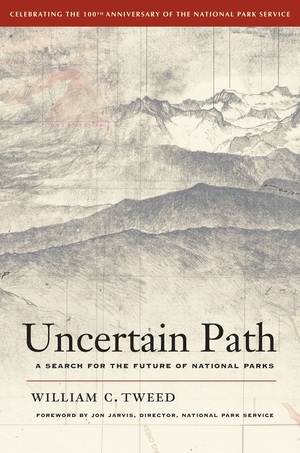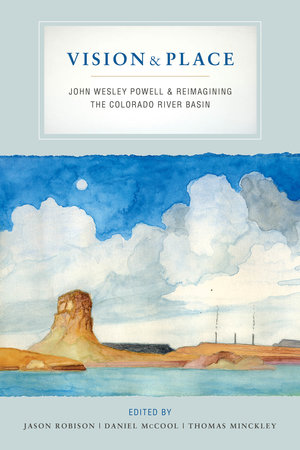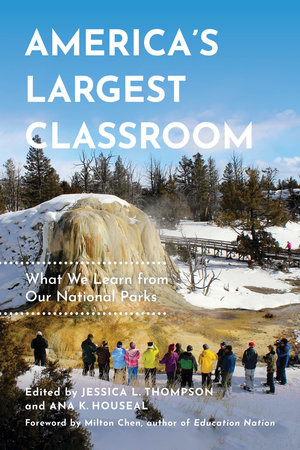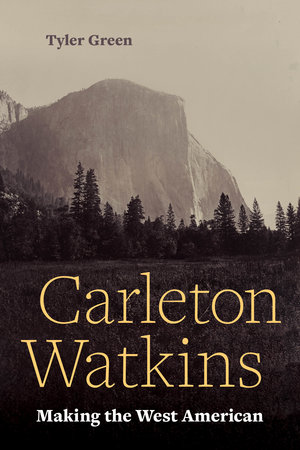For National Park Week, UC Press is highlighting books that give us new ways of understanding and seeing our national parks. These titles explore how our national parks came to be and chart their future.
Vision and Place
John Wesley Powell and Reimagining the Colorado River Basin
edited by Jason Robison, Daniel McCool, and Thomas Minckley
The Colorado River Basin’s importance cannot be overstated. Its living river system supplies water to roughly forty million people, contains Grand Canyon National Park, Bears Ears National Monument, and wide swaths of other public lands, and encompasses ancestral homelands of twenty-nine Native American tribes. John Wesley Powell, a one-armed Civil War veteran, explorer, scientist, and adept federal administrator, articulated a vision for Euro-American colonization of the “Arid Region” that has indelibly shaped the basin—a pattern that looms large not only in western history, but also in contemporary environmental and social policy.
One hundred and fifty years after Powell’s epic 1869 Colorado River Exploring Expedition, Vision and Place revisits Powell’s vision, examining its historical character and its relative influence on the Colorado River Basin’s cultural and physical landscape in modern times. In three parts, the volume unpacks Powell’s ideas on water, public lands, and Native Americans—ideas at once innovative, complex, and contradictory.

Uncertain Path
A Search for the Future of National Parks
by William C. Tweed
In this provocative walking meditation, writer and former park ranger William Tweed takes us to California’s spectacular High Sierra to discover a new vision for our national parks as they approach their 100th anniversary. Tweed, who worked among the Sierra Nevada’s big peaks and big trees for more than thirty years, has now hiked more than 200 miles along California’s John Muir Trail in a personal search for answers: How do we address the climate change we are seeing even now—in melting glaciers in Glacier National Park, changing rainy seasons on Mt Rainer, and more fire in the West’s iconic parks. Should we intervene where we can to preserve biodiversity? Should the parks merely become ecosystem museums that exhibit famous landscapes and species? Asking how we can make these magnificent parks relevant for the next generation, Tweed, through his journey, ultimately shows why we must do just that.
America’s Largest Classroom
What We Learn from Our National Parks
by Jessica L. Thompson and Ana K. Houseal
America’s Largest Classrooms offers insight and practical advice for improving educational outreach at national parks as well as suggestions for classroom educators on how to meaningfully incorporate parks into their curricula. Via a wide collection of case studies—ranging from addressing inclusivity at parks and public lands to teaching about science and social issues—this book illustrates innovations and solutions that will be of interest to nature interpreters, outdoor educators, and policy makers, as well as professors in the sciences writ large.
Carleton Watkins
Making the West American
by Tyler Green
Carleton Watkins (1829–1916) is best known for his pictures of Yosemite Valley and the nearby Mariposa Grove of giant sequoias. Watkins made his first trip to Yosemite Valley and Mariposa Grove in 1861 just as the Civil War was beginning. Motivated by Watkins’s pictures, Congress would pass legislation, later signed by Abraham Lincoln, that preserved Yosemite as the prototypical “national park,” the first such act of landscape preservation in the world. Carleton Watkins: Making the West American includes the first history of the birth of the national park concept since pioneering environmental historian Hans Huth’s landmark 1948 “Yosemite: The Story of an Idea.”
Drawing on recent scholarship and fresh archival discoveries, Tyler Green reveals how an artist didn’t just reflect his time, but acted as an agent of influence. This telling of Watkins’s story will fascinate anyone interested in American history; the West; and how art and artists impacted the development of American ideas, industry, landscape, conservation, and politics.
The Paradox of Preservation
Wilderness and Working Landscapes at Point Reyes National Seashore
by Laura Alice Watt
The Paradox of Preservation chronicles how national ideals about what a park “ought to be” have developed over time and what happens when these ideals are implemented by the National Park Service (NPS) in its efforts to preserve places that are also lived-in landscapes. Using the conflict surrounding the closure of the Drakes Bay Oyster Company, Laura Alice Watt examines how NPS management policies and processes for land use and protection do not always reflect the needs and values of local residents. Instead, the resulting landscapes produced by the NPS represent a series of compromises between use and protection—and between the area’s historic pastoral character and a newer vision of wilderness.
Forthcoming January 2022
Atlas of Yellowstone
Second Edition
by W. Andrew Marcus, James E. Meacham, Ann W. Rodman, Alethea Y. Steingisser, and Justin T. Menke
The publication of the Atlas of Yellowstone, Second Edition coincides with the 150th anniversary of the founding of Yellowstone National Park—a major international event. The atlas is an accessible, comprehensive guide that presents Yellowstone’s story through compelling visualizations rendered by international award-winning cartographers. Readers of this new edition of the Atlas of Yellowstone will explore the contributions of Yellowstone to preserving and understanding natural and cultural landscapes, to informing worldwide conservation practices, and to inspiring national parks around the world while also learning about the many struggles the park faces in carrying out its mission. Ranging from Indigenous Americans and local economies to geysers and wildlife migrations, from the life of one wolf to the threat of wildfires, each page provides leading experts’ insights into the complexity and significance of Yellowstone.




